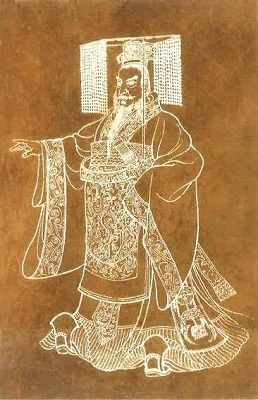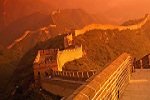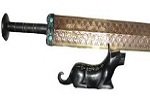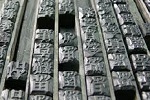Qin Shi Huang, the First Emperor of China
Home ![]() Famous People From Ancient China
Famous People From Ancient China ![]() Qin Shi-Huang
Qin Shi-Huang
Qin Shi Huang is the first Emperor of China, Ying Zheng (259 B.C.-210 B.C.). Qin means the Qin Dynasty, the first dynasty of China; Shi means beginning and Huang means emperor.
As you can see, when Ying Zheng declared himself the Shi Huangdi, meaning the first emperor, after he united China and established the first empire, he named himself rightly so.
Before Ying Zheng established the Qin Dynasty more than 2200 years ago, warring states fought with one another in China. Many lords had the ambition of uniting China, but only Ying Zheng succeeded.
The reason that Ying Zheng was able to unite China was first attributed to the solid foundation laid by his great grandfather Qin Xiaogong, who appointed reformer Shang Yang to carry out political and economic reforms, which enhanced the national power.
After Ying Zheng was enthroned as the king of Qin, with the assistance of the statesman Li Si, he implemented the national policy of a prosperous country and strong military, building the state of Qin into the greatest power among the warring states and united China in 221 B.C.
To consolidate the regime and stable the society, Ying Zheng...
- established a complete central and local official system
- unified the country's legal and monetary system
- standardized the Chinese characters, weights and measures
 All these measures were necessary to stabilize the society and promote the development of the economy and cultural exchanges. His great achievements turned a new page in the history of China.
All these measures were necessary to stabilize the society and promote the development of the economy and cultural exchanges. His great achievements turned a new page in the history of China.
But Ying Zheng also did something contrary to the interests of people. For instance:
-- in order to unify the public opinion, he confiscated and burned all the books from previous regimes that might be against his reign, and killed scholars who opposed him or his ideas, the so-called "fen shu keng ru" (burn the books and bury the scholars alive) in history;
-- countless labors were conscripted to guard the border and build the fortification walls (the Great Wall of China) to secure the frontier defense;
-- he extorted excessive taxes and levies to construct Epang Palace and his mausoleum (See picture here).
Soon people revolted after he died and the first unified feudal empire went to perdition within 15 years.
Qin Shi Huang died in 210 B.C. and was buried in his mausoleum at the foot of Lishan Mountain, east of the capital Xianyang. After more than two thousand years, in 1987, the mysterious mausoleum of the Emperor was inscribed on the World Heritage List.
In the brief years of his unification and reign of China, Qin Shi Huang left quite a number of historical sites, like Old Capital Xianyang, Lishan Xanadu, and Langyatai Stone Inscriptions in Mount Tai, where later generations still pay respect and extol the historical giant.
 The digital model Qin Shi Huang's Mausoleum that the Terracotta Army was meant to protect.
The digital model Qin Shi Huang's Mausoleum that the Terracotta Army was meant to protect.
Related Readings:



Suggested Readings:
Home ![]() Famous People From Ancient China
Famous People From Ancient China ![]() Qin Shi Huang
Qin Shi Huang

New York Pass With More than 50 Sttractions

Southern California CityPASS saves you 32% for Disneyland, Universal Studios and 3 other attractions











